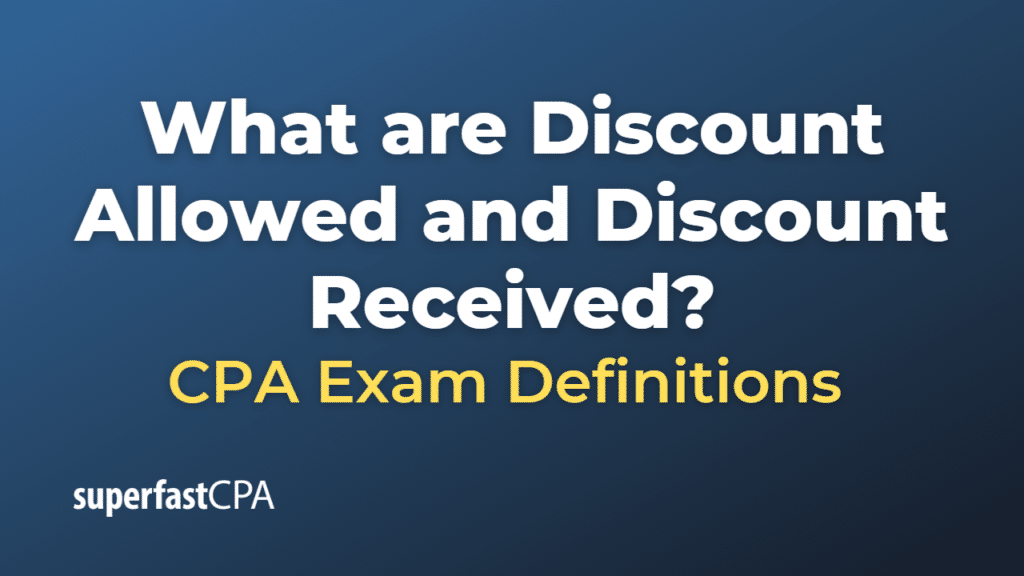Discount Allowed and Discount Received
“Discount Allowed” and “Discount Received” are accounting terms related to transactions between a buyer and a seller.
- Discount Allowed: This term refers to a reduction in price given by a seller to the buyer, which could be for reasons such as a sales promotion, volume purchase, early payment incentive, or to rectify minor defects in goods or services sold. From the seller’s perspective, discounts allowed are considered an expense and are usually recorded in the company’s financial statements under operating expenses.For example, if a business sells a product for $500 but allows a 10% discount for early payment, the discount allowed would be $50. The seller records this $50 as an expense.
- Discount Received: This is the flip side of the coin. It refers to the reduction in cost that a buyer receives from a seller. The buyer views this discount as a reduction in the cost of purchases and records it as such in their books. So, discounts received are considered as an income and are generally recorded in the company’s income statement as other income.Using the same example, the buyer who gets a 10% discount on a $500 purchase views this $50 as a discount received, and records it as income or a reduction in their cost.
It’s important to note that the terms “discount allowed” and “discount received” are from the perspective of the company recording the transaction, which could be either the seller (for a discount allowed) or the buyer (for a discount received).
Example of Discount Allowed and Discount Received
Let’s consider a scenario involving a seller, Office Supplies Ltd., and a buyer, XYZ Corporation:
Example for Discount Allowed:
Office Supplies Ltd. sells office furniture to XYZ Corporation for $10,000. To encourage prompt payment, Office Supplies Ltd. offers a 5% discount if the invoice is paid within 15 days.
This discount is a “discount allowed” from the perspective of Office Supplies Ltd. They’re allowing a discount to the buyer for early payment.
If XYZ Corporation pays the invoice within 15 days, Office Supplies Ltd. would receive $9,500 ($10,000 – $500) and the $500 would be recorded as a “discount allowed” expense in their accounting records.
Example for Discount Received:
On the flip side, XYZ Corporation views the same 5% discount as a “discount received”. They’re receiving a discount from the seller for early payment.
If XYZ Corporation pays the invoice within 15 days, they would pay only $9,500, receiving a discount of $500. XYZ Corporation would record this $500 as a “discount received”, which could be considered as other income or a reduction in their cost.
So, in the same transaction, Office Supplies Ltd. is allowing a discount, while XYZ Corporation is receiving a discount. This concept is important for properly recording transactions in the accounting records of both the buyer and the seller.













